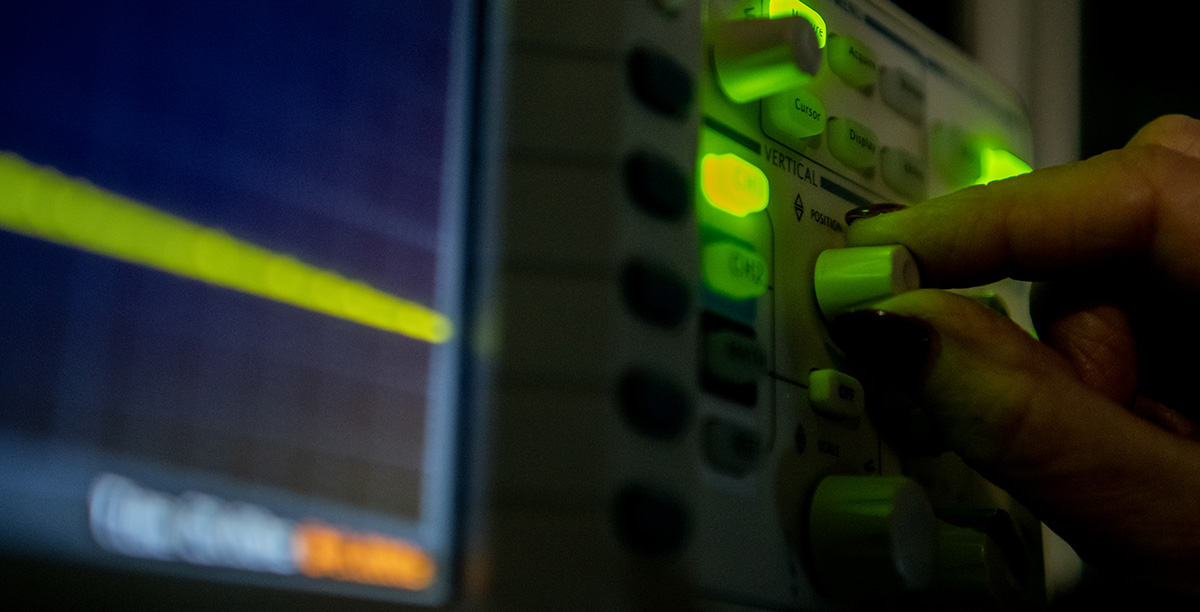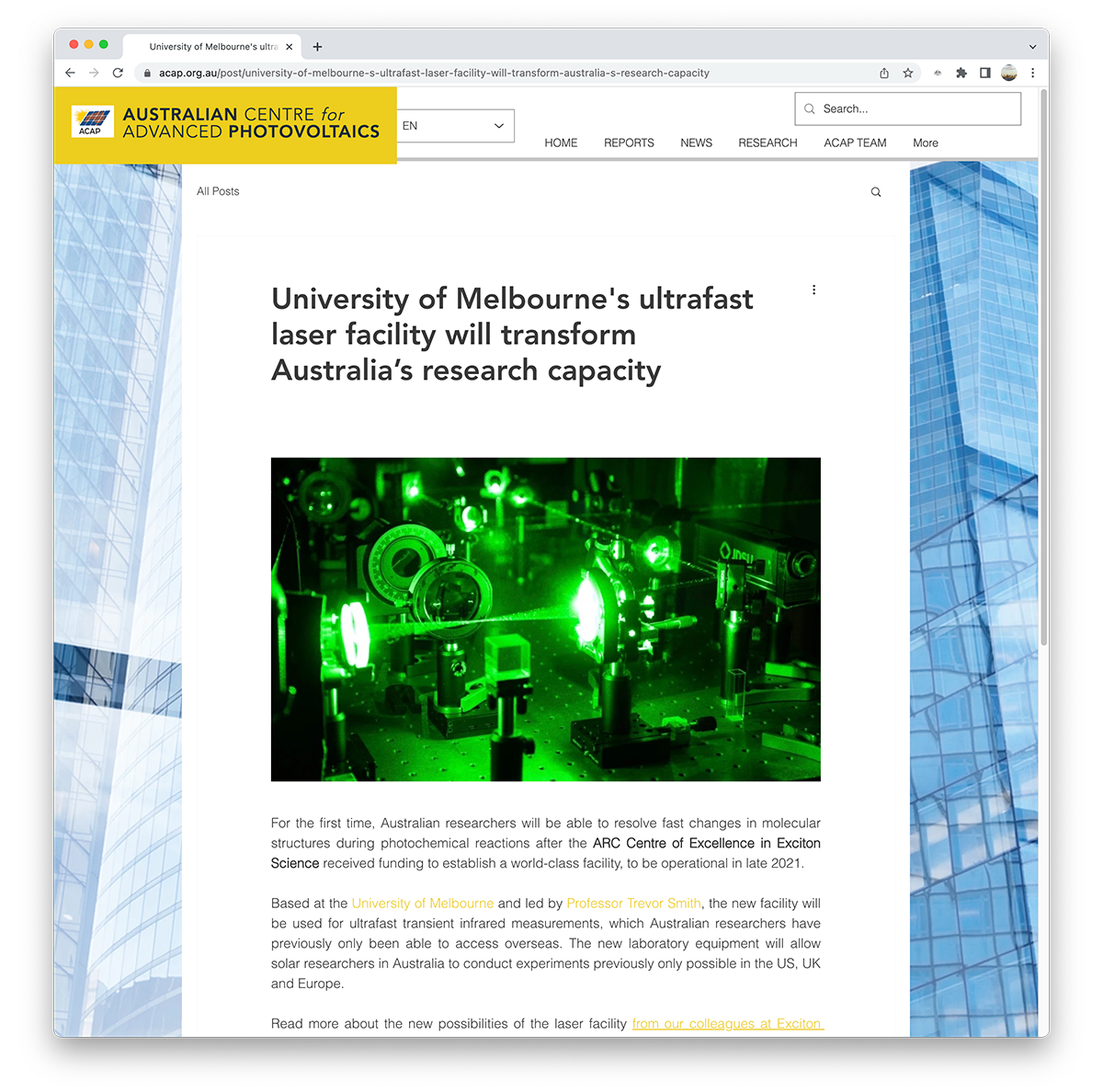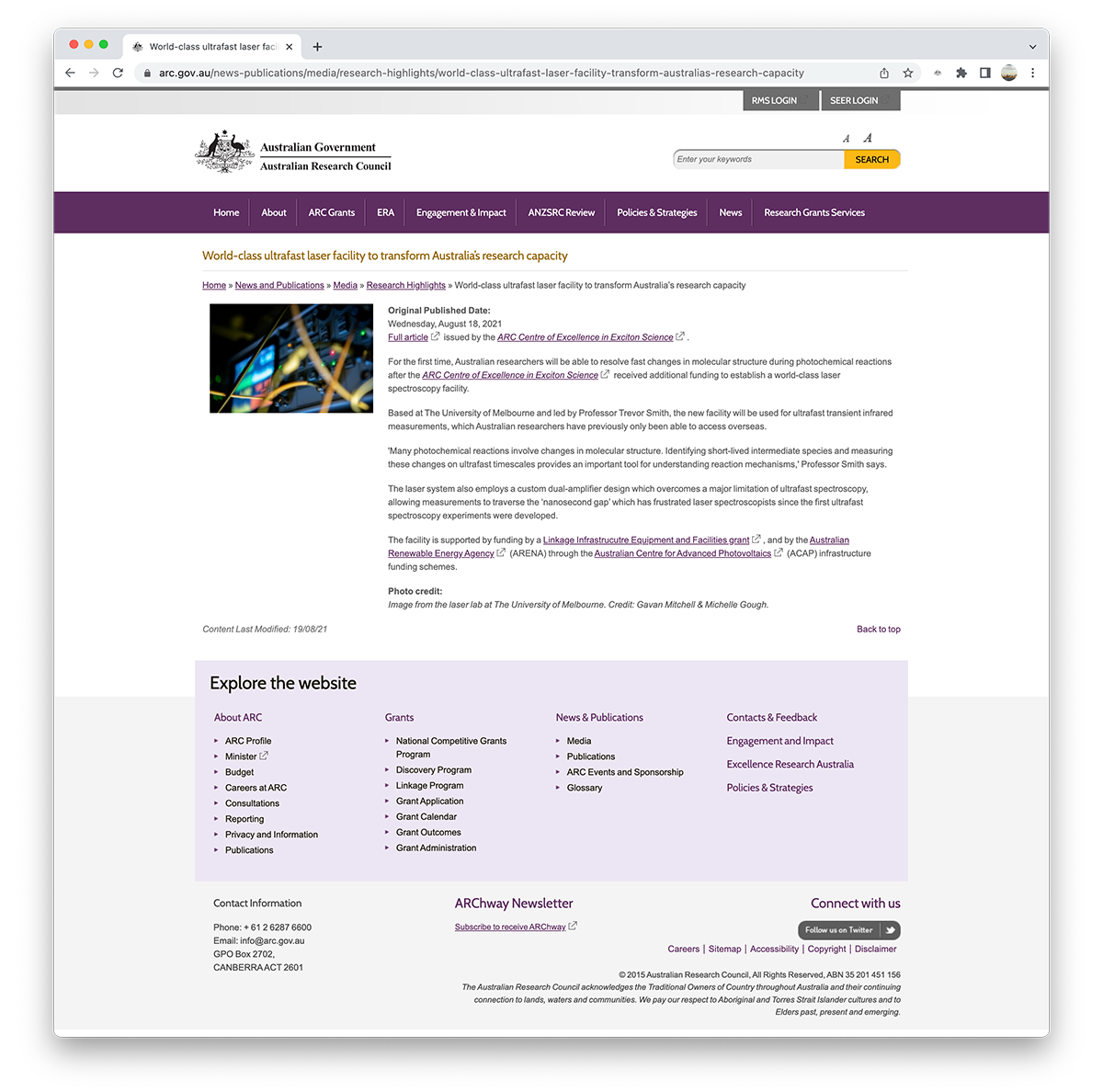World-class ultrafast laser facility will transform Australia’s research capacity
News
For the first time, Australian researchers will be able to resolve fast changes in molecular structure during photochemical reactions after the ARC Centre of Excellence in Exciton Science received funding to establish a world-class laser spectroscopy facility.

Based at the University of Melbourne and led by Professor Trevor Smith, the new facility will be used for ultrafast transient infrared measurements, which Australian researchers have previously only been able to access overseas.
“Many photochemical reactions involve changes in molecular structure. Identifying short-lived intermediate species and measuring these changes on ultrafast timescales provides an important tool for understanding reaction mechanisms,” Trevor said.
The laser system also employs a custom dual-amplifier design which overcomes a major limitation of ultrafast spectroscopy, allowing measurements to traverse the ‘nanosecond gap’ which has frustrated laser spectroscopists since the first ultrafast spectroscopy experiments were developed.
“To overcome the limitations of conventional ultrafast techniques, this facility combines multiple laser systems in order to continuously follow photochemical reactions from the femtosecond to the millisecond timescale,” Trevor said.
“The other exciting feature of this system is that it will enable ultrafast measurements on both the electronic and vibrational properties of materials.
“With this we can examine both the electronic changes that take place over an excited-state reaction, and changes in molecular structure.”
Dr Christopher Hall, a co-investigator on the project, said: “The absorption and transformation of light energy in materials is central to many areas of research, including in photovoltaics, lighting, security, energy storage, medicine, biotechnology and advanced industrial processes.
“The timescales and broad spectral tunability, spanning the UV-Vis-MidIR regions, all accessible in one facility, will provide a powerful platform for material research this country.”
The facility is supported by funding from the Australian Research Council (ARC, LIEF scheme) and the Australian Renewable Energy Agency (ARENA) through the Australian Centre for Advanced Photovoltaics (ACAP) infrastructure funding schemes.
Co-investigators on the project include Prof. Ken Ghiggino (UniMelb), Prof. Paul Mulvaney (UniMelb), Dr. James Hutchinson (UniMelb), A/Prof. Tak Kee (UniAdelaide), Prof. Derek Abbott (UniAdelaide), Prof. Nigel Spooner (UniAdelaide), A/Prof. Yasuhiro Tachibana (RMIT), A/Prof. Daniel Gomez (RMIT), Dr. Torben Daeneke (RMIT), Prof. Jeffrey Davis (Swinburne) and Prof. Xiaotao Hao (Shandong).
The technical design and procurement was aided by engineers at Light Conversion Lasers (Lithuania) and Lastek (Adelaide, Australia).
The facility will be operational in late 2021.

